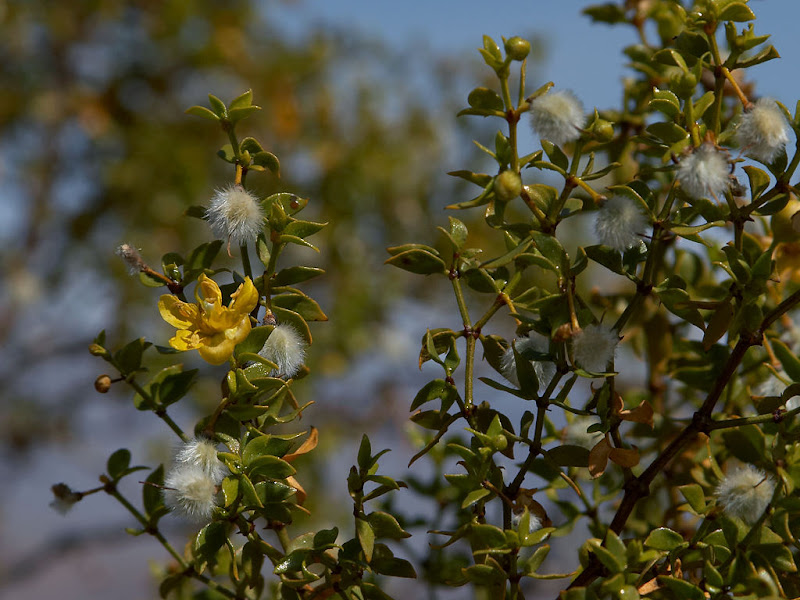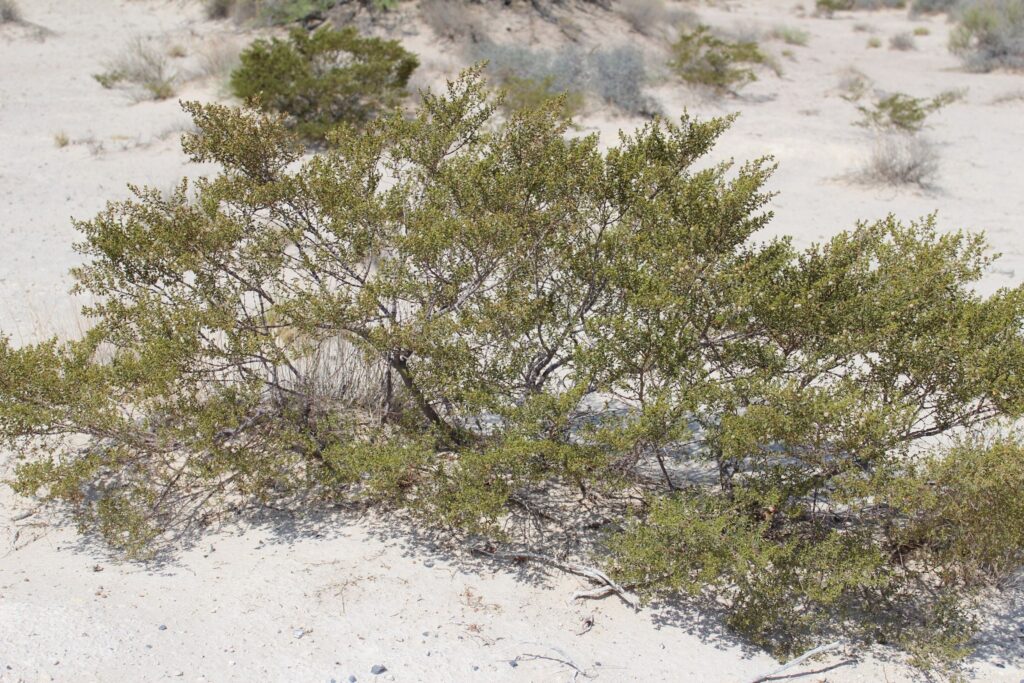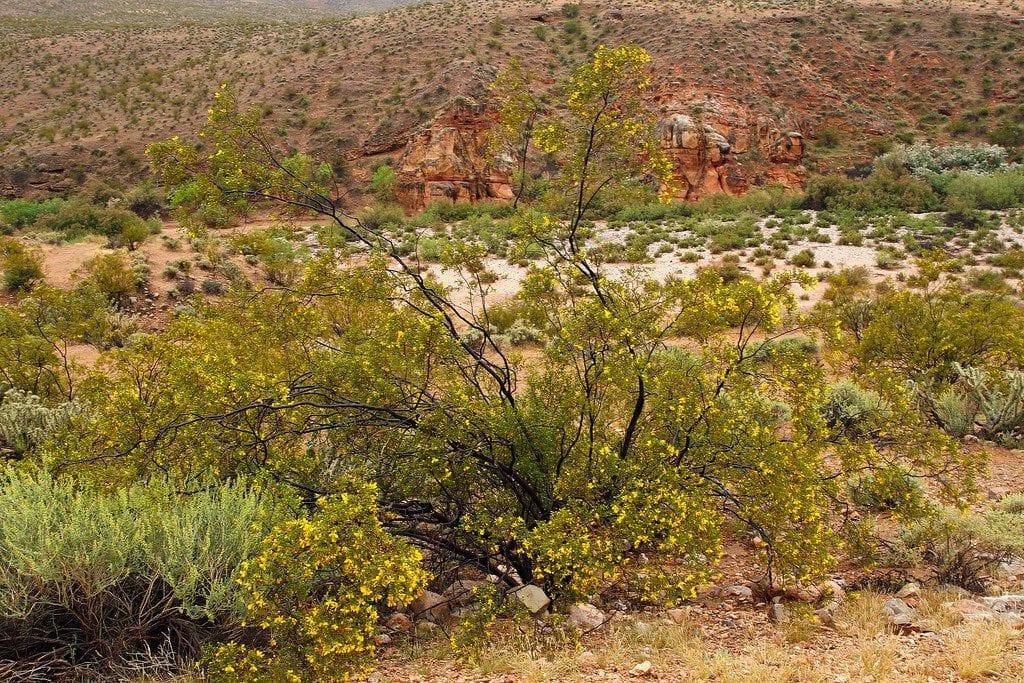An important factor present in agriculture is the excessive use of agrochemicals, which inclines us to seek alternatives that are not harmful to the environment and the farmer. One of the most favorable alternatives is the use of plant extracts as insecticides, fungicides, or bactericides, in order to develop a solution beneficial for both parties.
The Creosote Bush (Larrea tridentata) is a perennial shrub, native to desert regions, particularly in the southwestern United States and northern Mexico. This plant has a wide range of uses in agronomy due to its medicinal, antioxidant, and pesticidal properties, making it a valuable resource for various applications in agriculture. Its leaves contain a dense resin that acts as an antitranspirant agent by forming a barrier that reduces water loss through transpiration. Secondary compounds in this resin, such as phenols, lignans, and flavonoids, function as biochemical defenses against herbivores, fungi, and other microorganisms, as no pests, diseases, or animals attacking it have been identified. Various studies have confirmed the antifungal activity of Creosote Bush extracts against at least 17 important phytopathogenic fungi under in vitro conditions.

Some studies have suggested that Larrea tridentata extracts can promote plant growth and increase their resistance to abiotic stress, such as drought and soil salinity. This makes them a promising option for improving crop productivity and quality under adverse conditions. It is also used in the production of organic fertilizers due to its ability to improve soil quality and promote microbial biodiversity. Plant residues decompose in the soil, releasing essential nutrients for plant growth and improving soil structure.

In addition to its agronomic applications, Larrea tridentata is also used in the traditional medicine of some indigenous communities. It is attributed healing properties to treat a variety of ailments, such as gastrointestinal problems, inflammations, and wounds. However, it is important to note that its medicinal use should be approached with caution and under the supervision of healthcare professionals, as certain components of the plant can be toxic in large quantities.

It offers a range of benefits for agriculture and agronomy in general. Its ability to control pests and diseases, stimulate plant growth, and improve soil quality makes it a valuable resource for farmers, especially in arid and semi-arid regions where environmental conditions can be challenging.
García-Mateos R, Vargas-Arispuro I, Guerrero-Analco JA, et al. (2018). Pesticide activity of creosote bush (Larrea tridentata) extract on populations of aphids (Myzus persicae). Agrociencia. 52(3):391-403.
http://www.medicinatradicionalmexicana.unam.mx/apmtm/termino.php?l=3&t=larrea-tridentata
https://www.scielo.org.mx/pdf/polib/n32/n32a12.pdf
 AgronoBlog – Agriculture Blog
AgronoBlog – Agriculture Blog 